
Albanian Caves: Top 10 Caves to Enter in Albania
Among many natural treasures in Albania are also caves, found in many places and in different forms. Albanian caves remain largely unexplored; however, in recent years they have attracted many visitors.
1. The Black Cave of Pëllumbas / Shpella e Zezë e Pëllumbasit
The Black Cave of Pëllumbas is 25 kilometers (15 miles) southeast of Tirana, on the left side of the Skorana gorge. Hiking through the path along this gorge formed by the River Erzen is the only way to approach the cave.
The Black Cave is among the only five caves in Europe where remains belonging to a cave bear (Ursus spelaeus) dated 10,000 – 40,000 years ago have been found. The cave is even the exception in this category since remnants of humans themselves, the earliest belonging to the Paleolitic era, have been found. As such, the cave is a rare piece in the mosaic of understanding the development of prehistoric humans.
The cave itself (the part explored) is about 360 meters long (1181 feet), 10 to 15 meters wide (33 to 49 feet), and 45 meters (148 feet) high. The interior is rich in natural galleries filled with stalactites and stalagmites. These formations, along with other micro-forms of carstic nature, are essential in studying the paleogeographic evolution of the area and the circulation of subterranean waters.
To get to the walking trail that leads to the Black Cave you should follow the road from Tirana to Ibe and then to Pëllumbas village.
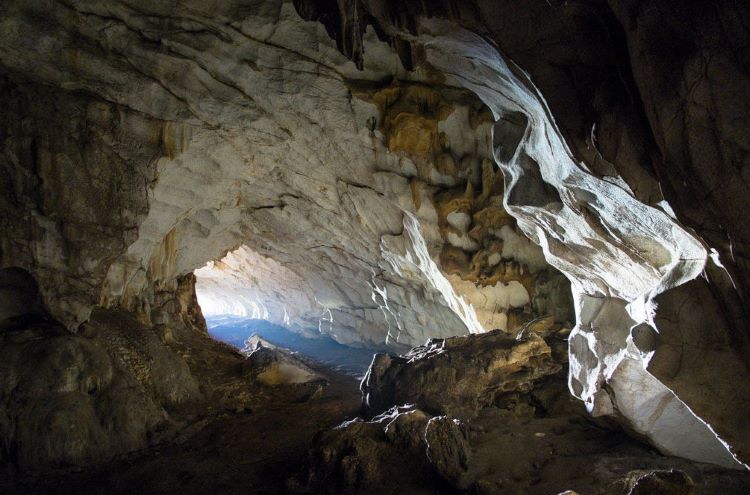
2. Dafina Cave / Shpella e Dafinës
The Dafina Cave, along with the Dafina Bay, is a must-visit natural attraction in the Albanian Southern Riviera. The small cave is partly submerged thus serving as a beach, beautiful and unique, in its own right. The stunning scenery of the cave provides for amazing photos for tourists to proudly share with their friends.
The best way to get to the Dafina Cave is by boat since this sea pocket stands in the wild, mountainous, and rough Karaburun peninsula. During the summer season, there are enough speed boating tours sailing the sea off Karaburun. All these tours include a stop into the Dafina Cave where tourists can dive straight into the water and in its overall immense beauty. Another highlight of these tours is also another equally amazing cave, the Haxhi Aliut Cave.
The waters washing the Dafina Cave and Bay are those of two seas, the Adriatic and the Ioanian. As such, swimming into the Dafina Cave has to be part of your bucket list.
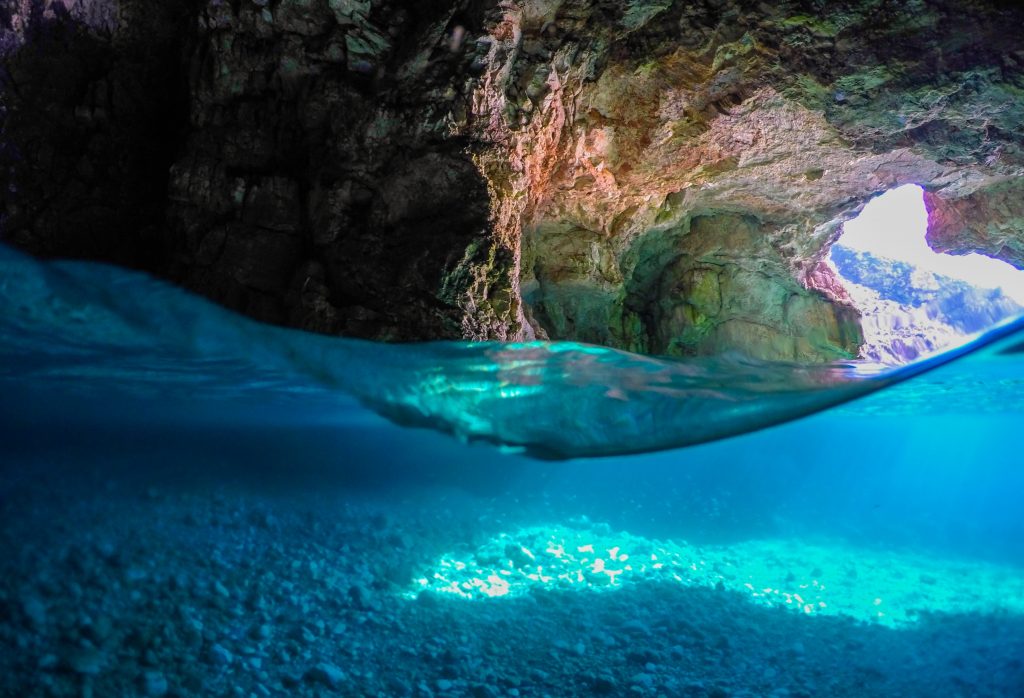
3. Cave of Haxhi Aliut / Shpella e Haxhi Aliut
The Cave of Haxhi Aliut is located in the Cape of Gjuhëza in the Karaburun Peninsula. The only entrance into the cave is through sea since waters surround all of it and wash through into its interior. This entrance is a remarkable rocky arch 60 meters (197 feet) high, like a gothic cathedral or oriental gate made by nature itself.
As in most places in Albania, there is a story or legend behind the cave itself. This story includes an Albanian sailor/pirate named Haxhi Aliu from Ulqin who, in the early XVII century, fled into this cave with his son. From here he launched naval assaults against the French, Venetian, and English fleets. Local legends say that his raids took Haxhi Aliu as far as Spain and Northern Africa.
The only way to enter into the natural dome of Haxhi Aliut is by boat from nearby beaches. Best time to visit the cave is during summer when there are many boat riding tours taking tourists into the largest marine cave in Albania.

4. Cave of Pirro Goshit / Shpella e Pirro Goshit
Cave of Pirro Goshit is one of the largest caves in Albania. It’s only 3 kilometers (1.9 miles) from the city of Çorovoda, on the northern side of the magnificent/sublime canyon of Gradec. In this uncharted terrain, the cave opens up to a stunning view of the canyon depths, the waterfall of Radesh, and dense vegetations.
The caves’ dimensions are huge: 1,252 meters (4,107 feet) long and five meters (16 feet) high. This natural labyrinth had numerous narrow galleries and water ponds, as well as intriguing formations of stalactites and stalagmites. It’s unclear if early humans set up their domain in such a remote area; if they did, the earliest estimate is the Neolithic era.
Even nowadays, the area holds many mysteries, some of them being the man-made tunnels of the 1980s. Cut aggressively into the canyon slope, these tunnels served as a small uncharted military base for the dictatorship regime. Tons of weapons and munitions were once stored in tunnels that took seventeen years to complete.
To get to the cave of Pirro Goshit the northeastern road from the centre of Berat and reach, after covering 2.5 kilometers (1.5 miles), the old Kasabashit Bridge; from there hike carefully upstream the Gradeci canyon for 3 kilometers (1.9 miles).
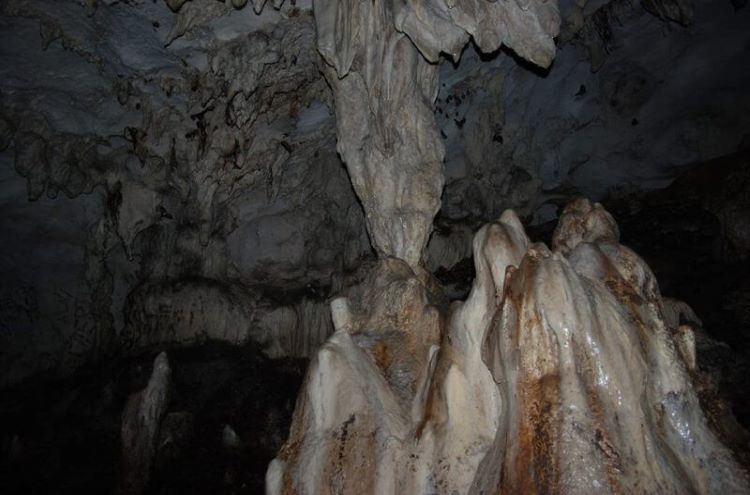
5. Cave of Treni / Shpella e Trenit
Cave of Treni in the Devoll region has an immense role in the study of prehistoric developments in Albanian territory. The cave, also called by locals as “Gryka e Ujkut” (”Wolf’s Throat”), stands on the southwestern isthmus formed by the Small Prespa Lake. Its entrance is only twelve meters from the lakes’ waters, though the whole area stands at a stunning altitude of 856 meters (2,808 feet) above sea level.
The entrance to the cave is narrow, but after a short corridor opens up into a first gallery 360 square meters (1,181 square feet). On the southern edge of this gallery begins yet another larger gallery. Of note is also a natural window over the first gallery that brings natural lighting into the interior. It’s clear that all this convenient network was once used by prehistoric humans as their residence.
Cave of Treni has supplied archaeologists with rare items such as prehistoric traces of life, ceramic works, and paintings in stone; the earliest evidence belonging to the late Eneolithic period (6,000 B.C.E.) and the latest to the early Medieval times.
The closest large city to the cave is Korca; from this city you can easily reach the Tren village in the Prespa National Park by driving thirty minutes east.
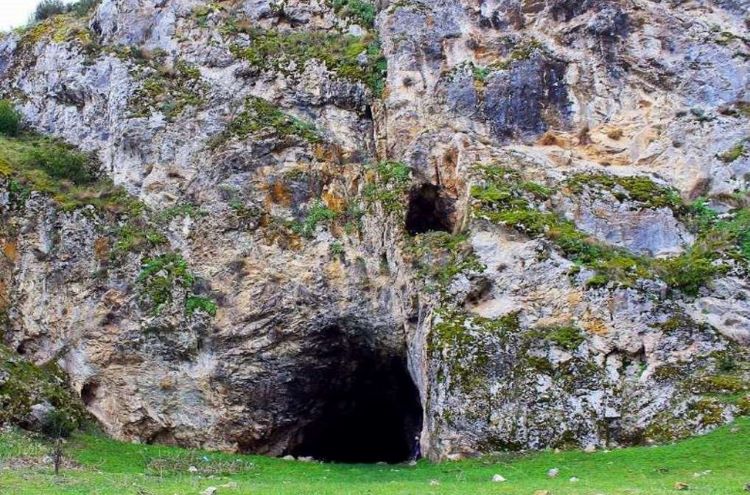
6. Cave of Kaurrit / Shpella e Kaurrit
The cave of Kaurrit opens up near the shore of the Koman Lake, only 40 kilometres from the town of Puka in northern Albania. In reference to the hinterland, the cave is near the village of Lëvrushkë in the Kollata Mountain.
The cave of Karrurit was inhabited since early Antiquity, continuing to serve as sheltered as late as the Byzantine era. In here, wandering monks of centuries ago found the ideal isolated retreat. Despite its long history, the cave was largely unexplored and ignored until 2007 when it was rediscovered and notified to the public.
The dimensions of the cave are at least 110 meters in length and 3 meters in height and width. It’s filled with peculiar stalagmites and stalactites and geological formations of karstic origin.
The most convenient route into the cave follows the rural road Pukë-Lëvrushk, and then a local boat ride into Koman Lake.

7. Pirate’s Cave / Shpella e Piratëve
The Pirate’s Cave creates a jaw-drawing scenery in the rocky shore of the Albanian Riviera near Dhërmi. The clear waters of the Ionian Sea from the cave floor while imposing tall rocks rising from the waters create an amazing, natural ceiling. The cave’s name suggests that it was once used by pirates for anchoring.
The Pirate’s Cave was made popular by the iconic book of the same name (“Shpella e Piratëve”) written by Petro Marko and published for the first time in 1964. In the roman that resonates with the styles of Hemingway and Mark Twain, the cave has a central role.
The cave is relatively small in length. It’s width is about 8 meters (26 feet) and height from the water surface is about 10 to 12 meters (33 to 39 feet). Yet, this natural harbour requires further exploration.
You can approach the Pirate’s Cave in two ways. The straightforward way is by boat from the coastal beaches of Dhërmi of Jalë. The other, more difficult, follows a path inland that reaches the monastery of Shën Theodhor above the cave. From there you can enter the cave below using its natural chimney.
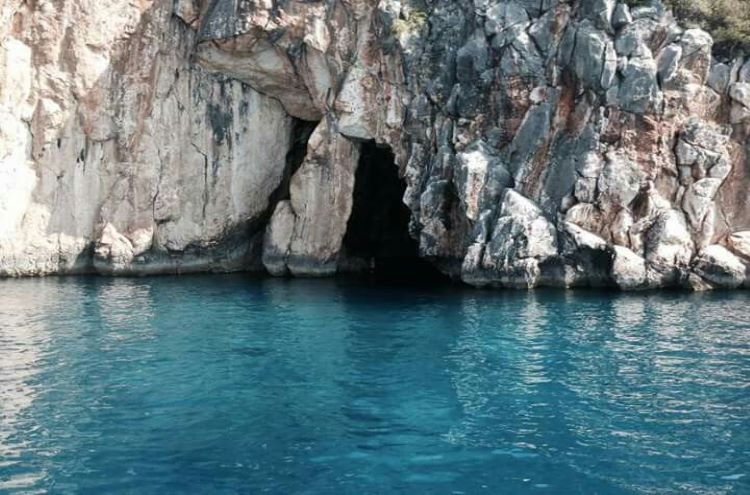
8. Cave of Viroit / Shpella e Viroit
The Cave of Viroit is a completely submerged cave under Lake of Viroit near Gjirokastra in southern Albania. Divers confirmed the presence of such a cave in 2015, at a depth of 249 meters (817 feet). Since then, native and foreign divers have continually explored the cave and experienced the unique sceneries lying underneath.
Exploring the submerged Cave of Viroit is not for everyone. Only professional divers can witness first-hand the secret beauty of this cave. Unless you are such a diver, you have to enjoy a taste of this beauty through stunning photographs captured by eager and passionate divers. You can also walk or cycle along the promenade at the side of the Lake of Viroit surrounded by lush pines and beautiful surrounding vegetation. The landscape beauty around the Lake of Viroit will make you feel like you are within a real-life canvas painting.
You can easily spot the Lake of Viroit when driving through the Tepelenë-Gjirokastër motorway.

9. The Black Cave of Nikaj-Mërtur / Shpella e Zezë of Nikaj-Mërtur
The Black Cave of Nikaj-Mërtur is located near the village of Qeresh-Mulaj in Curraj të Epërm (“Upper Curraj”) of Tropoja country. This area stands in-between the all-beautiful Valbona Valley, Koman Lake, and Shala Valley, also the most interesting part of the Albanian Alps.
Initial estimates suggest a whopping length of at least 6.5 kilometres (4 miles), making it not only the longest cave in Albania but in the entire continent. Explorers are still working on finding out its other extreme point which they believe is an exit into the height of Maja e Hekurave (“Peak of Steels”). Meanwhile, other intriguing limestone formations, bizarre engravings, and grotesque humanoid sculptures feed into the mystery surrounding the cave.
You can visit the cave by following the Bajram Curri-Lekbibaj-Curraj i Epërm road itinerary and then the hiking trail.
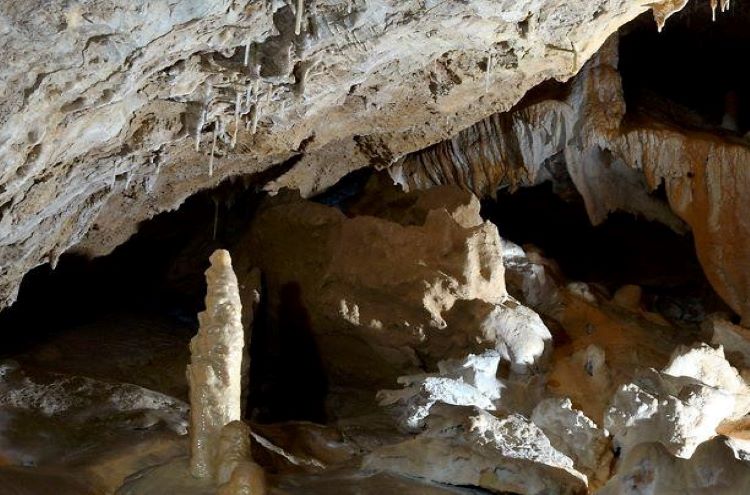
10. Gajtan Cave / Shpella e Gajtanit
The earliest records of human activity in the Albanian territory have been discovered in the Gajtan Cave. As such, Gajtan Cave in the town of Gajtan near Shkodër is the genesis of many studies on local prehistory. Furthermore, nearby there are ruins of an old Illyrian fortification, suggesting the presence of a sophisticated society in the area.
To get to Gajtan Cave follow a short trail up the town of Gajtan.
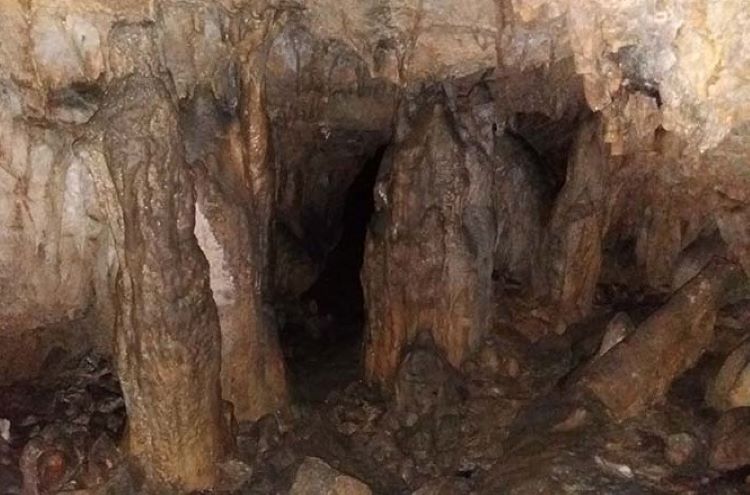



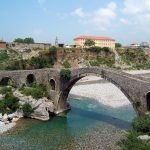





Im looking for the Gps Position of Petranikcave,RESURGENCE OF SIRIKAT AND SKOTINI
I think you are referring to Petranikut Cave close to the southern town of Këlcyra in the riverbank of the river Vjosa. If that’s the case that these are the GPS coordinates: Latitude: 40.30572° or 40° 18′ 21″ north; and Longitude: 20.18432° or 20° 11′ 4″ east. The source of information of these exact coordinates is: https://mapcarta.com/N5251967799 which I think you may use it for your inquiry. Please, if you are aiming to visit this cave, be very careful as when the river is in spate it can submerge this cave completely. This makes the approach to the cave also dangerous even though many people may underestimate such conditions in real time as the terrain in Albania usually looks more friendly from a distance than it’s actually is when you are in it. Also, I think the cave goes deep underwater so if you are thinking of diving it, don’t do it. Make sure to ask assistance from local guides and set up a system of real time notification on your position to the locals or local community. Let me know here if you need other information. Kind Regards, Nik.
What a fascinating article. I am hooked on discovering so much more about Albania and it’s caves. Perhaps I can visit Albania one day! Thanks, Regan
Hello Regan. Glad you liked the article. If you want to discover more on Albania prior to getting there, you can check out our other articles as well. All the best!